Standing in the field, there was silence before the rains came. It was just me and the plant for a moment—everyone else in the distance—and the plant, barley, was hooded and free. It poked in the wind against a six-row neighbor, and begged the question: Why don’t you need more of me?
The plant breeders were about to pull up behind, talking all their homozygosity and double haploid smack. But first they’d grab another beer from the station set up for swilling in the field. They are a thirsty lot, these plant breeders, especially on #BarleyDay. I looked back down at the green and purple tinders dancing in the breeze, and before the breeders could pipe in with their version of an answer, I attempted one for myself. Why?
It’s what this whole group was there to answer. Why barley? For me the questions are about food, but I quickly realized that for others it’s about malt, about beer, forage, and farming. The field where we stood is a test plot, a patchwork of various kinds of barley dotting the landscape at the OSU extension where there is a double-haploid breeding program. If you don’t know what that means, not to worry. I didn’t either. I was there for the pancakes.
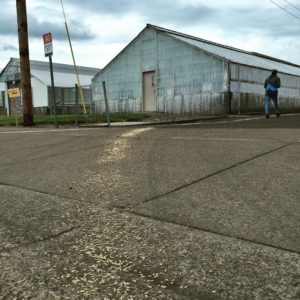
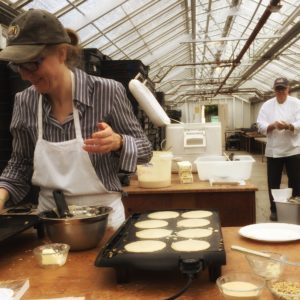
I’m not going to attempt to explain the breeding program in any depth. I don’t have the skills for that. Instead I’ll leave you with a few of the resources I garnered to help me wrap my head around it all. For a start, this book was recommended to me as a way to familiarize myself with plant breeding. It’s written for the home gardener which I figure is a good place to start.
Also, here is a lighthearted overview of what plant breeding is. Thank you, You Tube.
Last, I walked away after a lively discussion with Andrew Still of Adaptive Seeds with a burning need to understand how our system of seeds really works. I’ve dabbled in the difference between F1 hybrids and GMO, but it’s Andrew’s passion for this humble and hidden frontline of our food system that made me wonder what things like open-pollination and landrace varieties really mean. The former refers to seeds that breed true, roughly identical to their parents; the latter refers to a way that farmers adapt domesticated species to a local ecotype.
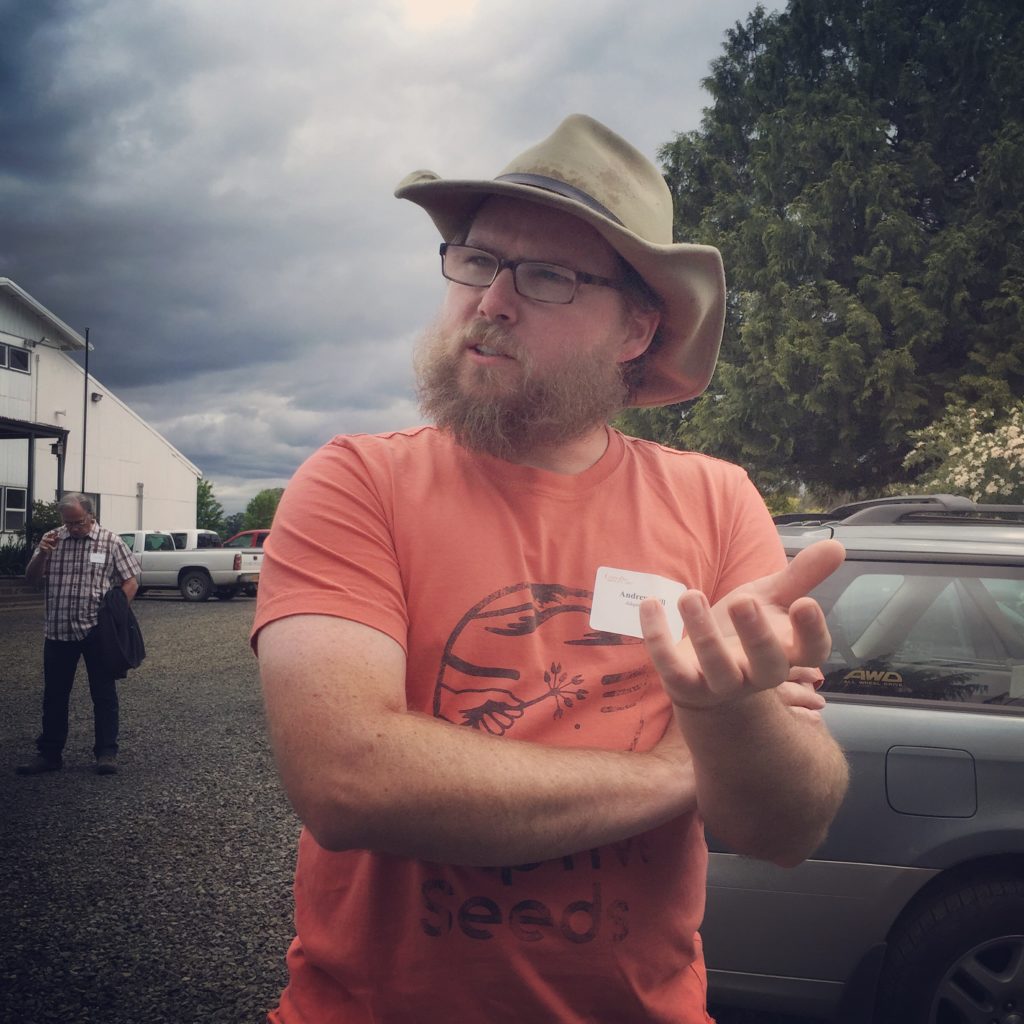
A few things you need to know about plant breeding:
-Plant breeding is important for sustainable food systems that have the potential to feed the multitudes and also work for our farmers.
-Plant breeding does not equal GMO. Here is a concise little article about the different kinds of crop improvement techniques.
Okay, so now that we’ve got all that on the table, let’s talk barley. Like wheat, rye, and oats, barley is a grain. And like all grains, it’s the seed of a grass, the cultivation of which marks our history as civilized populates. To be reductive: Grain=Culture. When it comes to our life here on Earth, it’s clear we’ve been holding hands with various grass seeds for a long time. A long, long time. In fact, barley was one of the first crops we cultivated and it still trickles into daily life, mostly in the form of beer and alcohol. Also every time we say the word ‘barn’ which shares its etymology.
Barley is for more than just soup these days. If you only know barley by that overly pearled stuff that people throw as a token into beef stew, stop that now. Barley is good food, both in taste and nutrition. There are new hulless varieties coming to market (thanks to our trusty and now four-beers-in plant breeders from above). Barley is not a grain that can stand in for wheat in bread (unless you want a brick!), but it’s a great addition. It’s crept onto my table in other surprising ways over the past year.
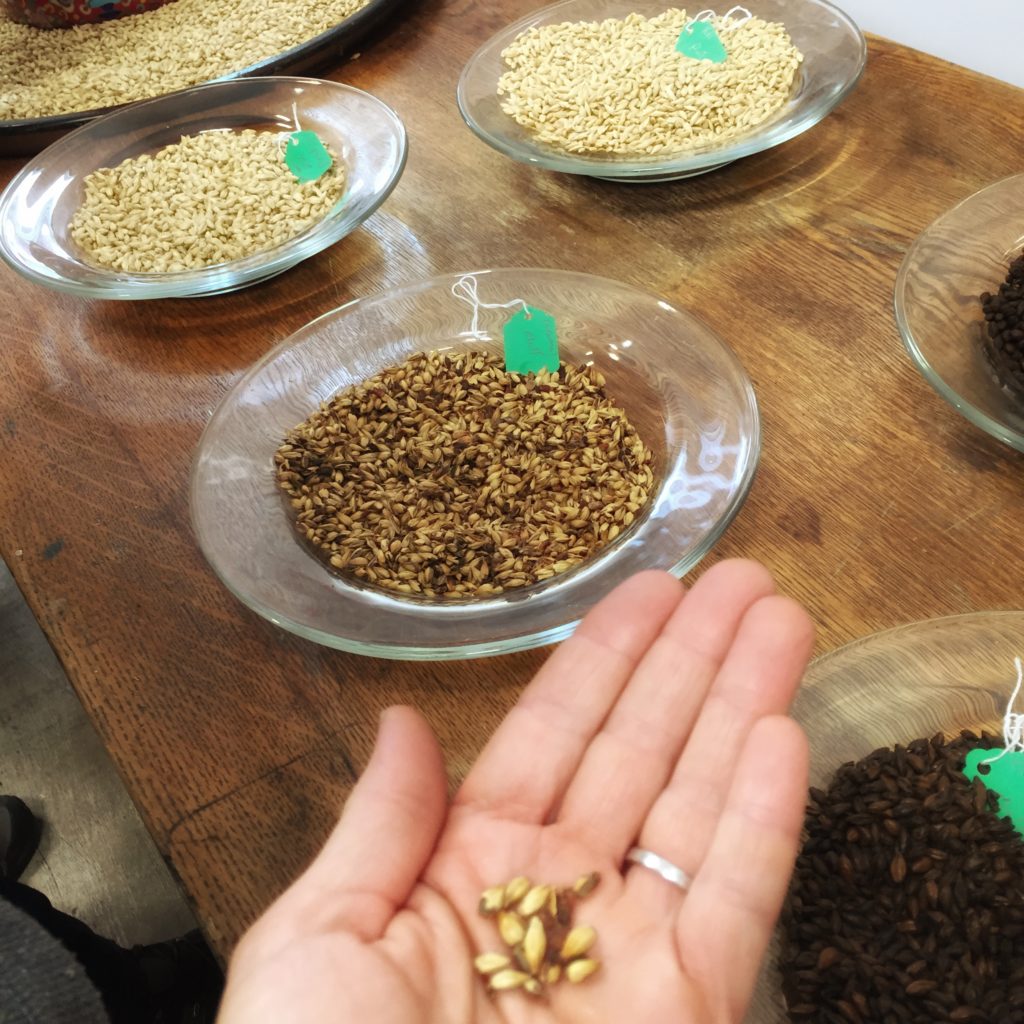
These barley flakes make a great alternative to oatmeal.
Here’s a gorgeous heritage variety for grain salads.
There’s nothing like a little addition of this North Carolina malted barley in your pancakes or this flaked to add crunch to granola.
Sprouted barley tends to be sweet (hence the reason malt is sweet) and makes a great inclusion to seeded breads.
If you can get your hands on any kind of malt syrup, try mixing it with softened butter for your next breakfast spread. This was served to me up in the Skagit Valley this year and it was one of those food moments that woke my pallet with overtones of the familiar, but was refreshing and new at the same time.
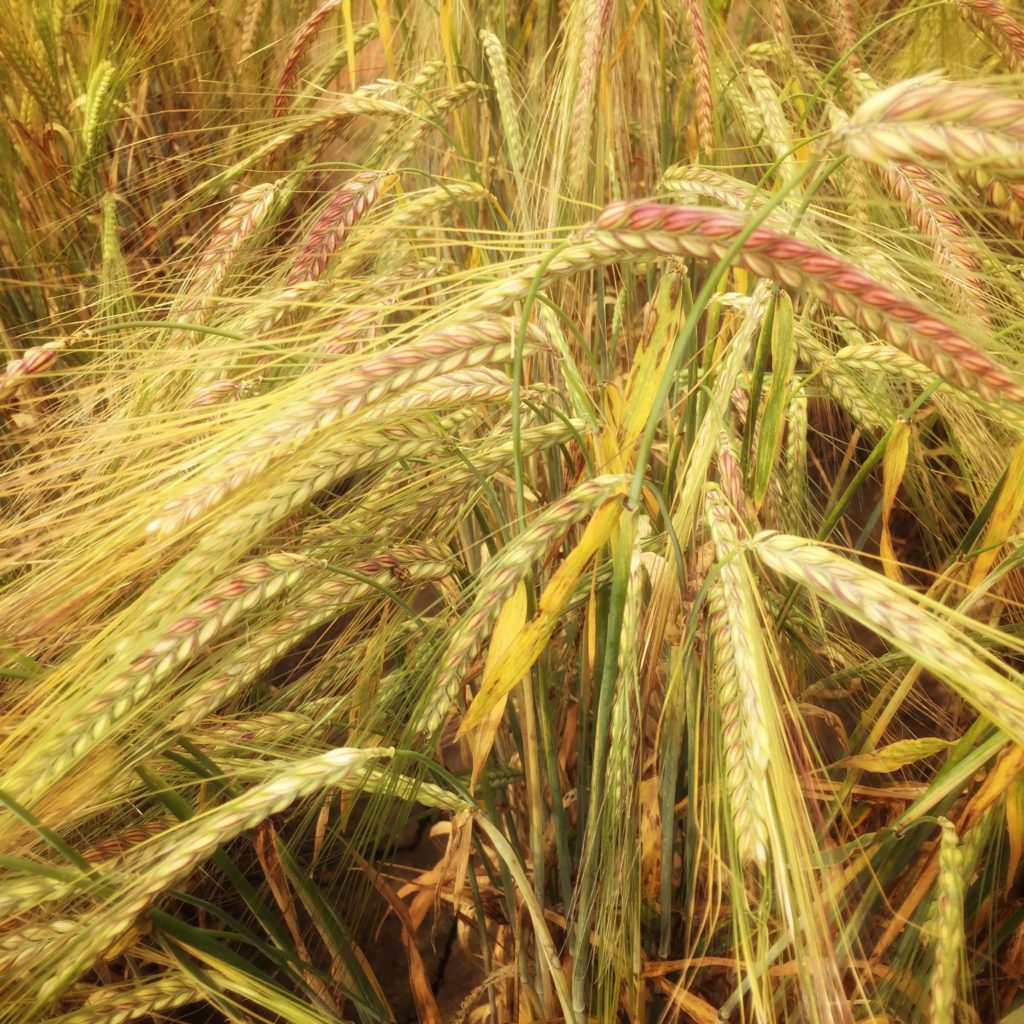
Reasons to eat barley:
- It tastes like grain had a wicked fun party with heavy whipping cream and invited you to join.
- It’s full of soluble fibers, especially beta-glucans, which not only fill you up, but there is evidence that they feed your beneficial microbiota and modulate your immune response.
- Eating it supports farmers by giving them another rotation in their fields while also supporting a potential revenue stream for food, beverage production, or forage uses.
Stay tuned for home malting experiments.
My heartiest thanks to Lane Selman of the culinary breeding network, Pat Hayes of OSU Barley Project, and Dr. Andrew Ross for his unending knowledge about grains, sharing his baking secrets, plus giving me a chance to insert the words “cereal chemist” into common conversation and watch people’s eyes get big when they think the bread world has its own serial villain. He also makes a mean barley pancake with Amy Halloran at his side.
So I stood there in that field a long time contemplating barley’s place in our food system. I couldn’t stop thinking about how primal it is to be in a field of cultivated grasses. No…not primal, exactly. In fact, just the opposite. It’s like standing on the bridge of our primitive and civilized selves and watching our history with food unfold. To that end, tonight I’ll eat some barley.
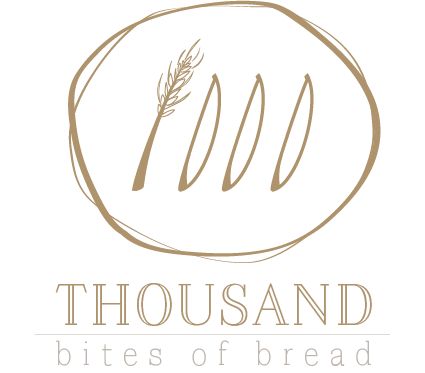

“I couldn’t stop thinking about how primal it is to be in a field of cultivated grasses. No…not primal, exactly. In fact, just the opposite. It’s like standing on the bridge of our primitive and civilized selves and watching our history with food unfold.” This is so exactly right! Standing in the middle of a grain field gives me that same resonant, hypnotizing feeling as sitting by a crackling fire. Thank for this beautiful story.
Thank you, Margarett! I look forward to standing in a lot more fields together in the future. =)